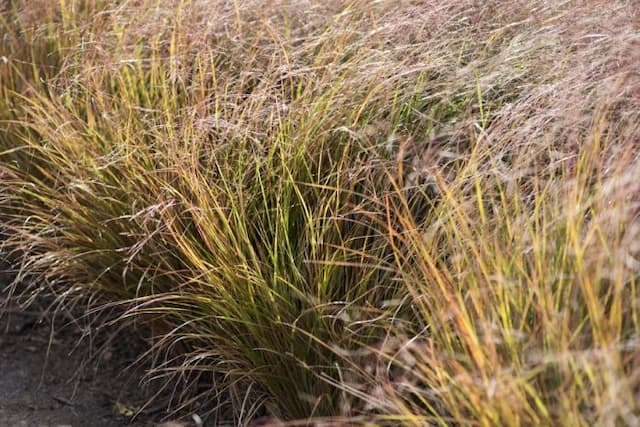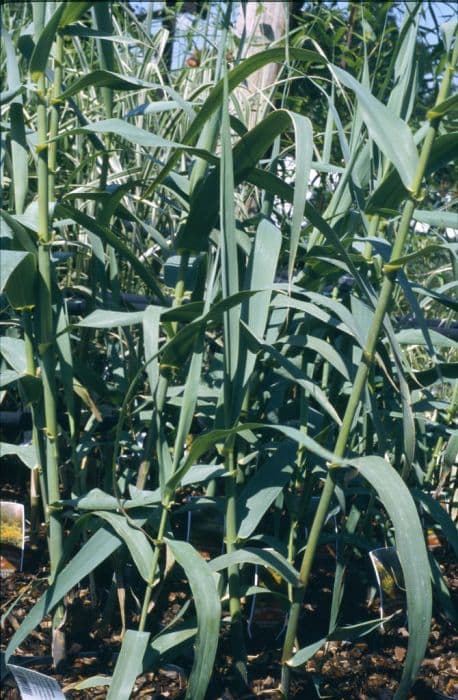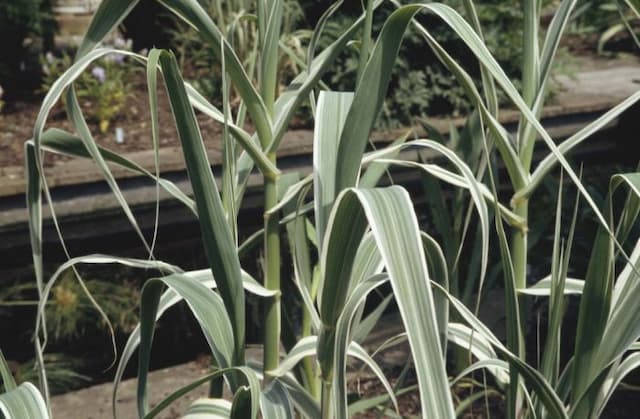Mexican feather grass Stipa tenuissima

ABOUT
S. tenuissima is a deciduous grass to 60cm, forming a compact upright tuft of thread-like leaves, with narrow, arching, feathery flowering panicles in summer
About this plant
 Names
NamesFamily
Poaceae
Synonyms
Mexican Feather Grass, Texas Needle Grass, Pony Tails, Angel Hair, Silky Thread Grass, Nassella Tenuissima
Common names
Stipa tenuifolia, Nassella tenuissima, Stipa capillata, Stipa membranacea, Stipa tenuifolia var. pulcherrima, Stipa tenuifolia var. tenuissima.
 Characteristics
CharacteristicsLife cycle
Perennials
Foliage type
Deciduous
Color of leaves
Green
Height
2 feet (60 cm)
Spread
1 foot (30 cm)
Plant type
Grass
Hardiness zones
7
Native area
Mexico
Benefits
 General Benefits
General Benefits- Ornamental appeal: Mexican feather grass adds aesthetic value to gardens with its fine, hair-like foliage and graceful movement.
- Low maintenance: It requires minimal care once established, needing only occasional watering.
- Drought tolerance: This species is well-suited for xeriscaping due to its ability to thrive with little water.
- Erosion control: The dense root system helps stabilize soil and prevent erosion on slopes.
- Habitat for wildlife: It provides cover and nesting material for birds and small animals.
- Adaptability: Mexican feather grass can grow in a wide range of soil types and environmental conditions.
- Seasonal interest: It offers visual interest throughout the year, with green growth in spring and summer, and golden hues in fall and winter.
- Reseeding: It can self-sow to create natural drifts in the landscape without becoming invasive in most regions.
 Medical Properties
Medical PropertiesThis plant is not used for medical purposes.
 Air-purifying Qualities
Air-purifying QualitiesThis plant is not specifically known for air purifying qualities.
 Other Uses
Other Uses- Stipa tenuissima, commonly known as Mexican feather grass, can be used in the creation of dried floral arrangements due to its feathery textures that retain their shape and appeal long after drying.
- Mexican feather grass is often implemented in landscape photography as a foreground element that adds depth and a soft texture to natural scenes.
- This plant is occasionally used in fashion design, where its delicate strands are incorporated into textiles or accessories for a unique, nature-inspired look.
- In craft projects, Mexican feather grass can serve as a natural material for making bookmarks, greeting cards, or decorative paper by pressing the strands into the medium.
- During festive seasons, it can be utilized as a natural decoration, weaving its strands into wreaths or garlands for a rustic charm.
- Artists may use the fine strands of Mexican feather grass as a base for miniature landscapes or as texture in mixed media artwork.
- Mexican feather grass can act as a natural screen or divider in outdoor spaces, providing privacy with its dense, feathery foliage.
- The plant's ability to sway gracefully in the wind makes it an excellent choice for adding movement in kinetic garden sculptures or installations.
- It can be used in educational settings as a plant that demonstrates wind pollination or anemochory for botany and ecology studies.
- Mexican feather grass strands can be used in the production of small-scale eco-friendly brooms or brushes, though this use is not very common due to the grass's delicate nature.
Interesting Facts
 Feng Shui
Feng ShuiMexican feather grass is not used in Feng Shui practice.
 Zodiac Sign Compitability
Zodiac Sign CompitabilityMexican feather grass is not used in astrology practice.
 Plant Symbolism
Plant Symbolism- Elegance: With its fine, hair-like foliage that elegantly sways with the slightest breeze, Stipa tenuissima, commonly known as Mexican Feather Grass, symbolizes elegance and grace.
- Resilience: Mexican Feather Grass is known for its hardiness and ability to withstand dry conditions, which makes it a symbol of resilience and endurance.
- Lightness: The airy appearance of its feathery plumes evokes a sense of lightness and release from burdens.
- Movement: As the grass moves with the wind, it is often associated with life's flow and flexibility.
 Water
WaterMexican feathergrass requires moderate watering. Initially, provide 1 gallon per week to help the plant get established. Once mature, water it sparingly – about 0.5 gallons every two weeks, as it is drought tolerant. During hot, dry periods, increase watering slightly, but avoid overwatering, as this plant prefers drier conditions. Always check the top inch of soil for dryness before watering to prevent waterlogging.
 Light
LightMexican feathergrass thrives in full sun conditions, needing at least 6 hours of direct sunlight daily. It is best suited for a spot that receives unfiltered sunlight throughout most of the day. Avoid placing it in heavily shaded areas as this can hinder its growth and reduce the graceful movement and appearance of its foliage.
 Temperature
TemperatureMexican feathergrass is hardy and adaptable, tolerating temperatures as low as 20°F and as high as 100°F. For optimal growth, maintain temperatures within the range of 40°F to 80°F. Protect the plant from extreme cold by providing shelter or mulch if temperatures drop below its minimum threshold.
 Pruning
PruningPrune Mexican feathergrass in late winter to early spring before new growth begins. Trim back the foliage to about 4 to 6 inches from the ground to remove old, dead growth and promote fresh, new foliage. Pruning yearly encourages healthier, denser growth and maintains an attractive shape.
 Cleaning
CleaningAs needed
 Soil
SoilMexican feather grass prefers well-draining soil with a slightly alkaline to neutral pH level, about 6.5 to 7.5. A mix of garden soil, coarse sand, and peat or a commercially available cactus mix would be ideal for ensuring good drainage and aeration.
 Repotting
RepottingMexican feather grass is typically not repotted frequently, as it thrives in less fertile conditions. It may be split and repotted every few years in the spring, if necessary, to manage its size or renew the planting medium.
 Humidity & Misting
Humidity & MistingMexican feather grass is tolerant of a wide range of humidity levels and does not require high humidity to thrive. It is well-suited to the humidity levels found in most outdoor environments.
 Suitable locations
Suitable locationsIndoor
Provide full sun, good airflow, and infrequent watering.
Outdoor
Plant in full sun, well-draining soil; water sparingly.
Hardiness zone
7-11 USDA
 Life cycle
Life cycleStipa tenuissima, commonly known as Mexican feather grass, begins its life cycle as a seed, which germinates primarily in the spring when soil temperatures and moisture levels are conducive to growth. The seed develops into a seedling, characterized by the emergence of its first grass blades. As the plant matures, it grows into a clump-forming perennial, with dense, fine-textured foliage that sways in the wind, giving the appearance of soft green to golden feathers. During the reproductive stage, typically in late spring or early summer, it produces delicate, airy panicles that rise above the foliage and disperse new seeds through wind and animal movement. Once pollinated, the plant sets seed which eventually falls to the ground, completing the cycle. After several years, the grass may become dormant or die back in the winter, but will typically re-emerge from its root base if conditions are favorable.
 Propogation
PropogationPropogation time
Spring-Early Summer
The most popular method of propagating Mexican Feather Grass, or Stipa tenuissima, is through seed collection and sowing. The ideal time to collect the seeds is in late summer to early fall when they have matured and the foliage of the plant has produced a golden hue. The seeds should be carefully shaken from the flower spikes and stored in a cool, dry place until the spring planting season. When sowing, lightly cover the seeds with soil as they require sunlight to germinate, keeping the soil moist but not wet until germination occurs, which is usually within 2 to 3 weeks. Since Mexican Feather Grass is a warm-season grass, the seeds will benefit from being sown after the danger of frost has passed and the soil has warmed to around 70 degrees Fahrenheit (approximately 21 degrees Celsius).









